Use Mod Podge to do a photo transfer to glass! The decal method is the most successful way to get transfer on glass that I’ve found. Scroll down to the bottom of this post to see a video of this method in action!
Skills Required: Intermediate. You should expect some trial and error with this project. The decals are somewhat thin and it takes some practice to learn how thick to make the medium and how much paper to rub off. It helps if you’ve used Mod Podge or photo transfer medium before.
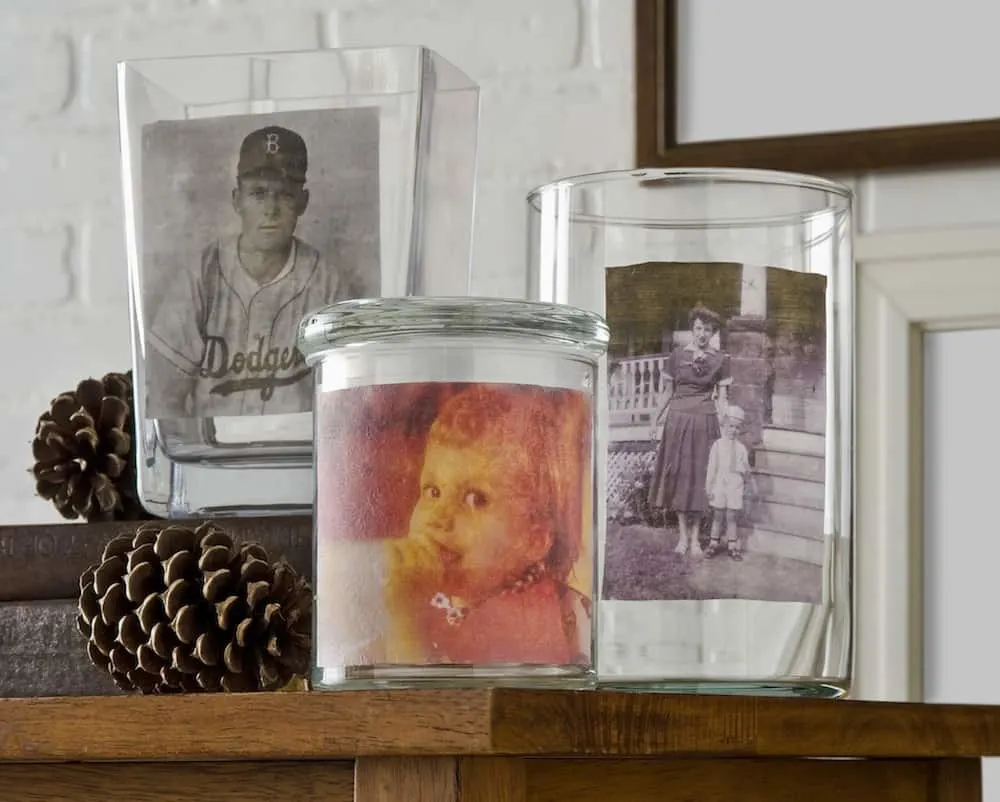
Nothing makes a house feel more like a home than pictures of friends and family. I especially love collecting and displaying old photos that family members haven’t seen.
Here is an interesting way to display vintage photos on glass vases using a Mod Podge photo transfer process – it’s call the decal method. What I like about it is that the photos look very rustic after being transferred, so this project goes well with farmhouse decorating.
Photo Transfer to Glass
The decal method is the most successful way of doing a photo transfer to glass that I’ve ever found and I highly recommend it.
Let’s dive into the decal method and into a few frequently asked questions you might have about transferring photos to glass before I share the tutorial with you. I’ve done this a lot and have failed a lot, so I’m excited
The Decal Method
I’m sure you’ve noticed that glass is a slick surface. You can Mod Podge a photo directly to glass, but can you photo transfer to glass? The answer is no – not directly. You’ll need to use the “decal method.”
In the decal method, you’re going to print out photos on printer paper (not photo paper) and then paint them with Mod Podge photo transfer medium.
You’ll let that dry, rub away the paper, and a decal of the medium will be left behind. You’re going to use this as a decal to place on the glass. The nice thing about this method? It’s basically a glass cling, and you can (typically) remove it and reuse as necessary.
(Another related method is the packing tape image transfer if you want to check that out! It works on glass too but has a different effect).
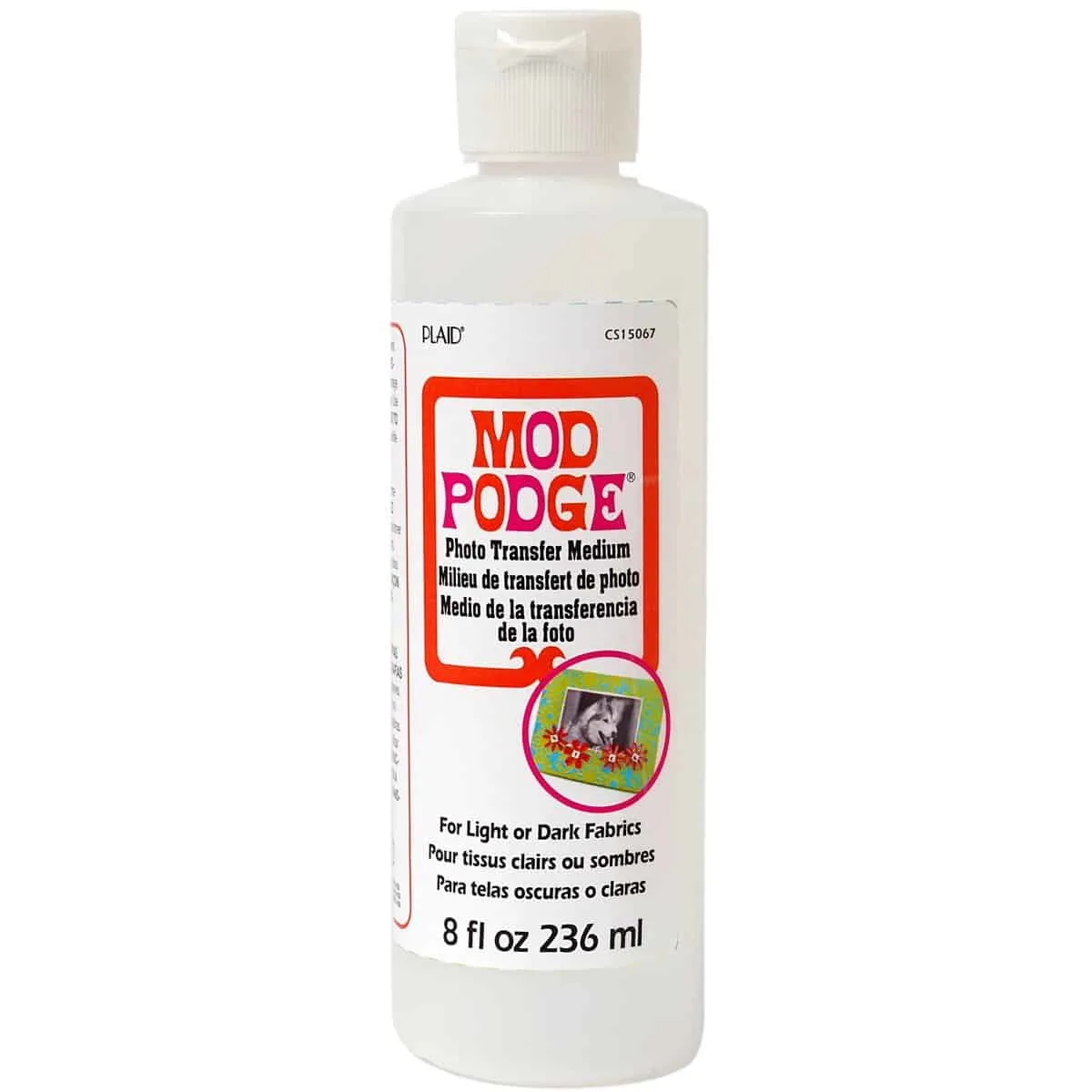
Inkjet or Laserjet?
Typically you’d do this photo transfer to glass with laserjet copies. But the rule isn’t that you use a laserjet – the rule is that you use a dry ink toner.
My point is, I actually used my HP inkjet printer for this photo transfer, because the ink that HP puts in their cartridges is very dry.
If you have any doubts as to whether your inkjet printer has a dry ink, you can go ahead and try this first with the photo transfer medium and see if it works. If it doesn’t, go to Staples or Kinkos and get laserjet printouts. Remember to use regular paper – not photo paper.
Transferring Photos – Tips for Success
What are my most important tips for a photo transfer to glass? Here they are:
- Use a medium layer of the transfer medium – obscure the image entirely so you can’t see any portion of it. Thicker is better than thinner, otherwise your decal will be too thin and tear easily.
- Reverse any images with words so that they appear correctly when the transfer is complete.
- Use thinner printer paper. You are going to rub away all the paper, so nothing too thick – 20 lb or less is good.
- Don’t rub too much in one place or you’ll tear the decal. Wet, rub, let dry a little, then repeat. The decals are slightly fragile.
- Understand that the images are always going to have a vintage look. This is the case when you transfer any image to wood, canvas, etc. as well. That is the result of using this medium.
Ready for the project? Let’s get to it – and learn how to transfer photos to glass using the decal method.
These vases are a great way to showcase some of the great times you’ve had with your family and friends over the summer. I’d recommend keeping some and giving others away as handmade gift ideas. Add fun fall items, like pine cones, for ambience.
Transfer a Picture to Glass
Gather These Supplies
- Glass vases of various sizes
- Mod Podge photo transfer medium
- Printer and paper
- Foam brush
- Scissors
- Wax paper or a silicone mat
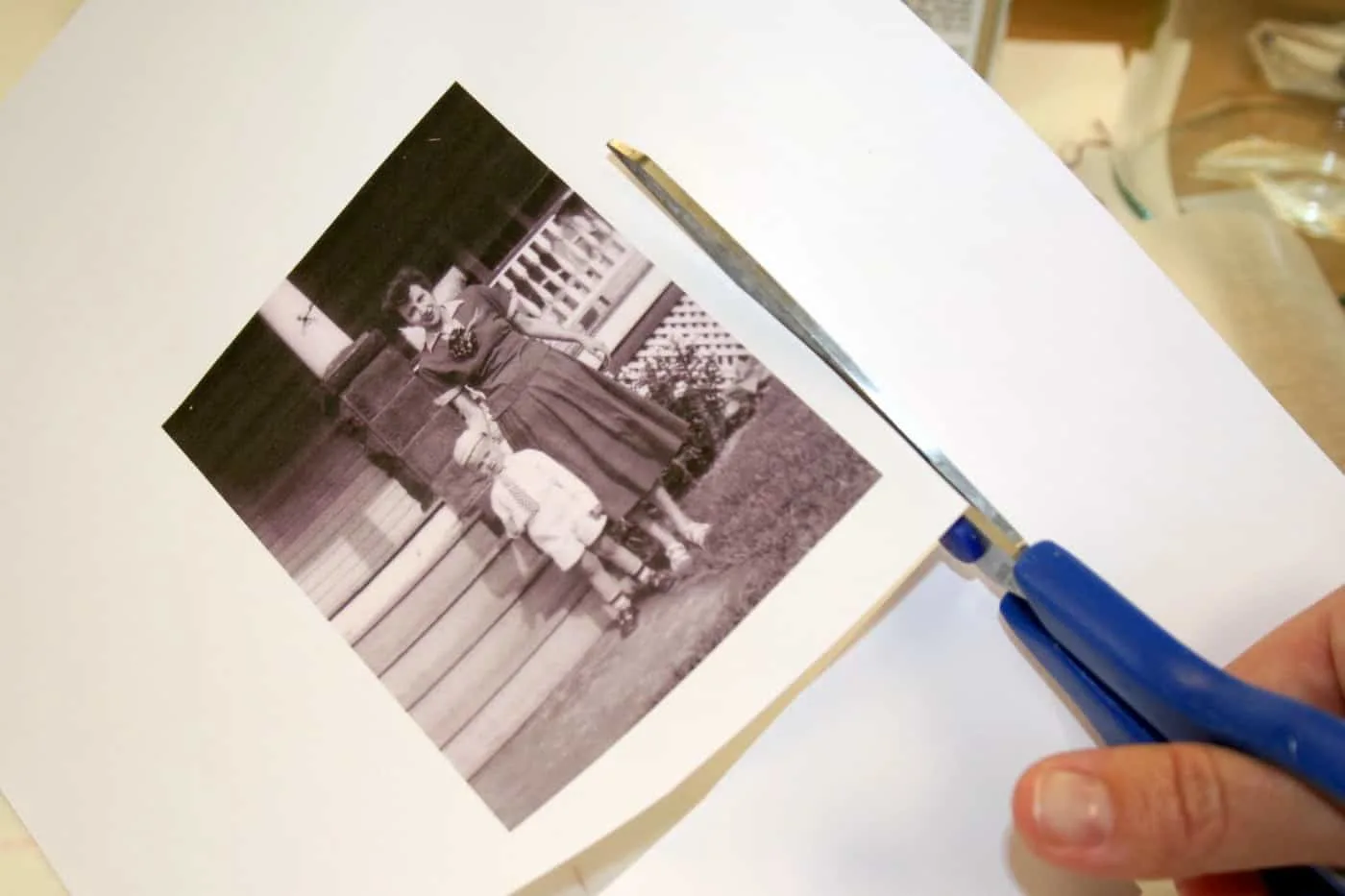
Print out your images on your printer and cut them out with the scissors. Leave approximately a 1/2” – 1” border around the image.
TIP: If there is any writing or text in the photo, reverse the image before printing to make it readable.
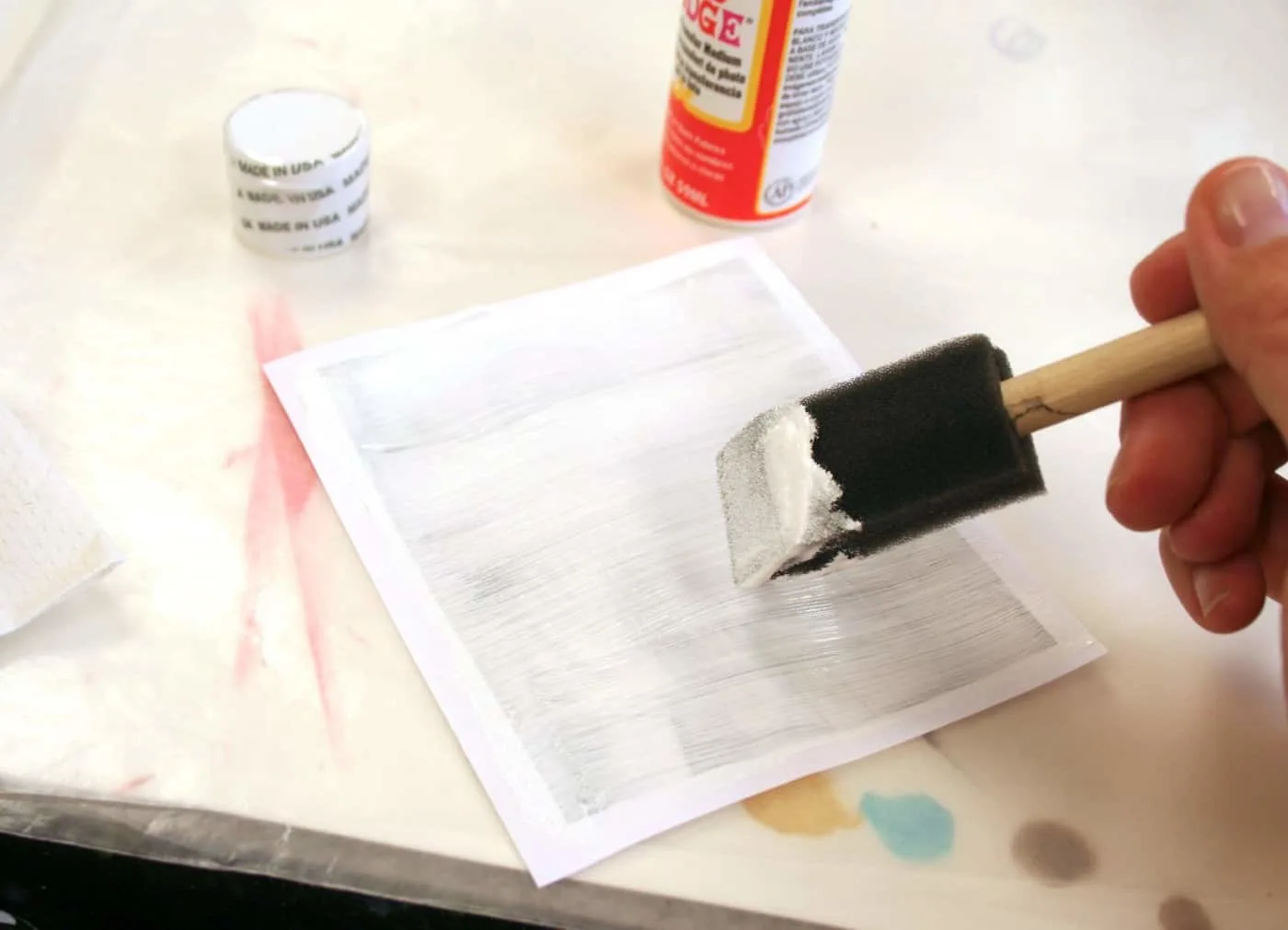
Lay your photos face up on a piece of wax paper. Spread Mod Podge in a thick layer using the foam brush until you can no longer see the photo. Then place on a separate piece of wax paper to dry. (keeping the photo transfer medium and photo face up).

Let your photos completely dry overnight on the wax paper.
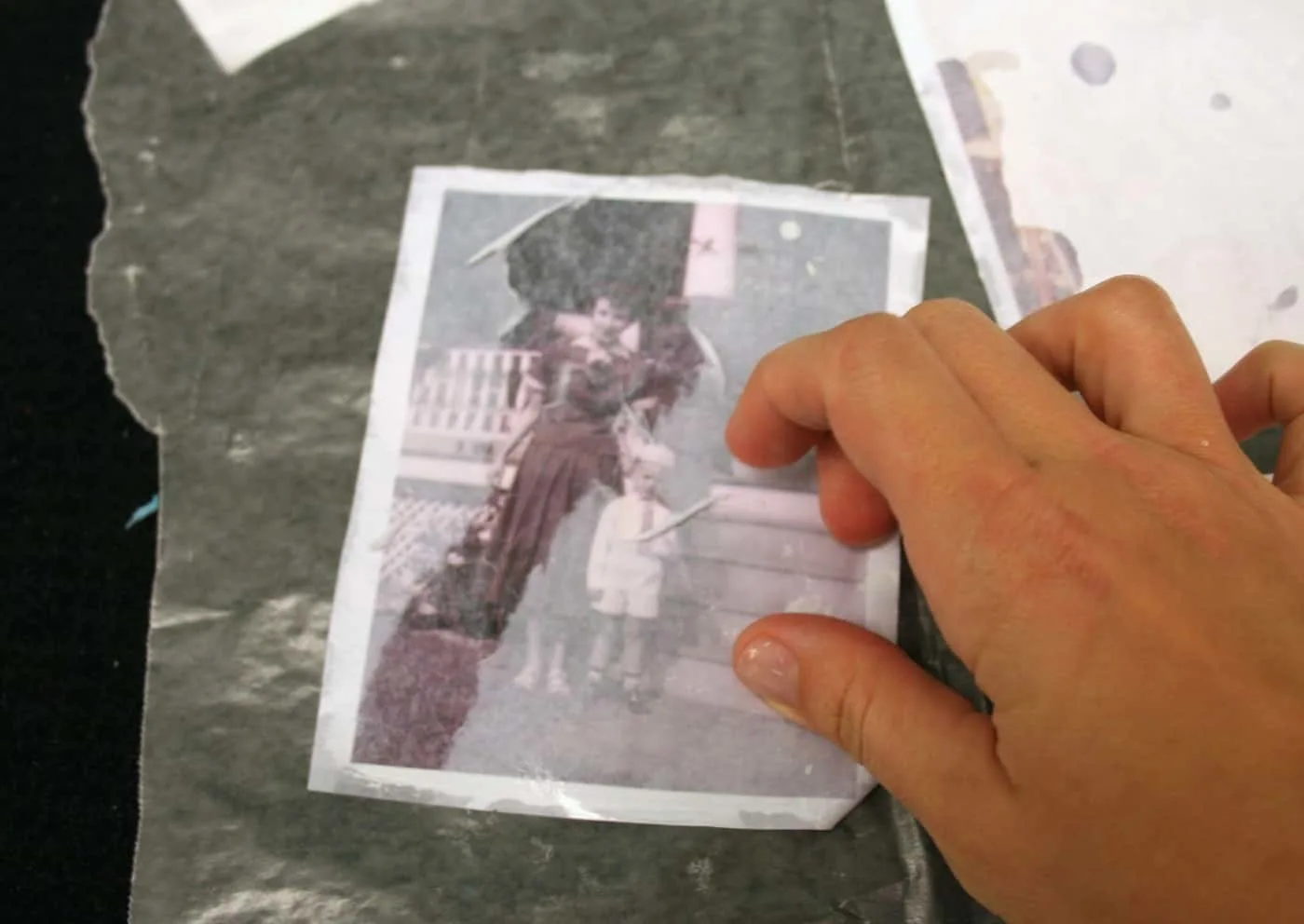
Once dry, turn your photo over, dampen in the sink (or with a spray bottle) and start rubbing away the paper. You can use your finger and medium pressure.
TIP: Don’t rub too long in one place or you will tear the image.
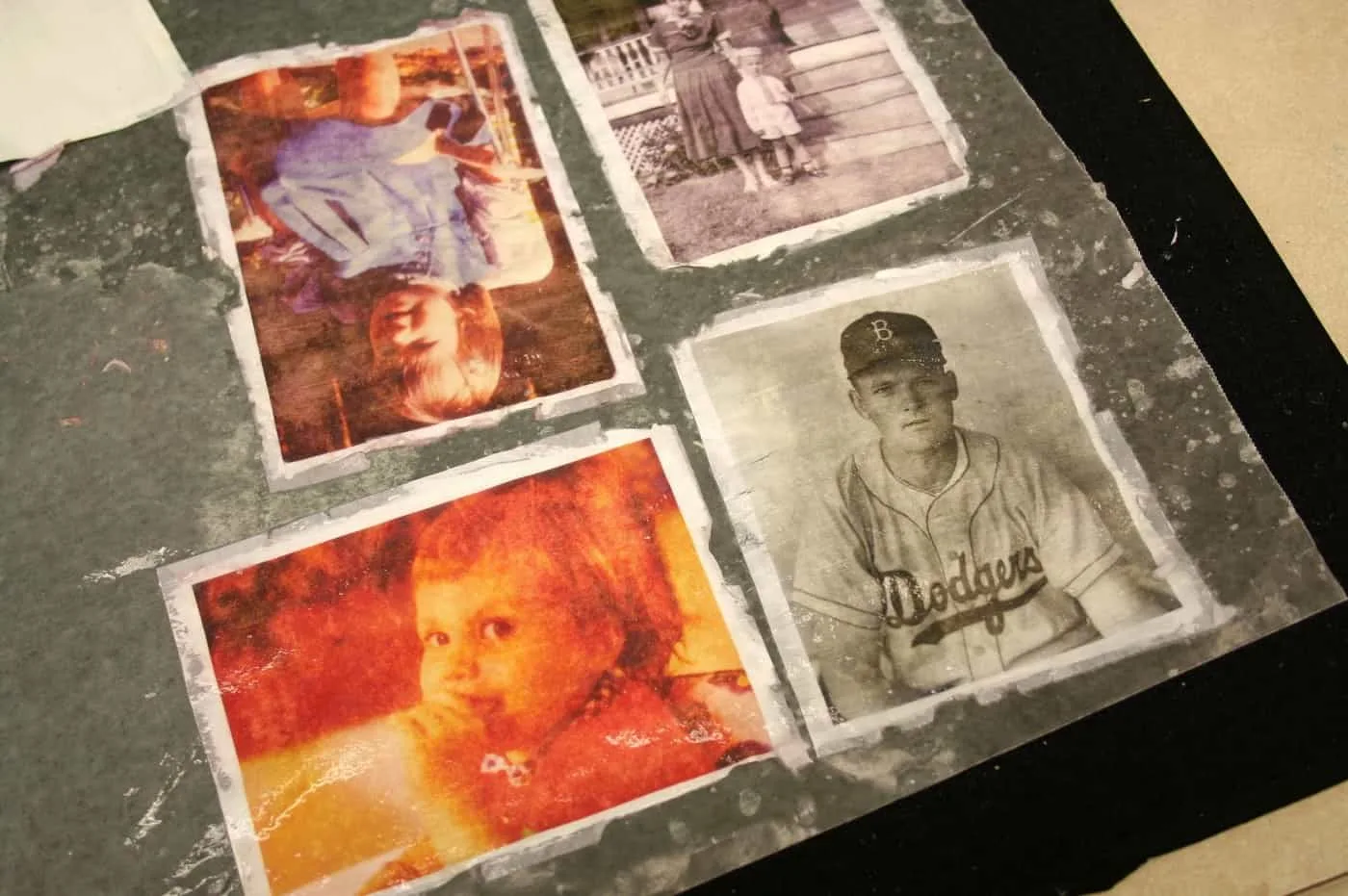
Let the photos dry and see if there are additional areas where you need to rub away paper. Continue to be gentle when rubbing.
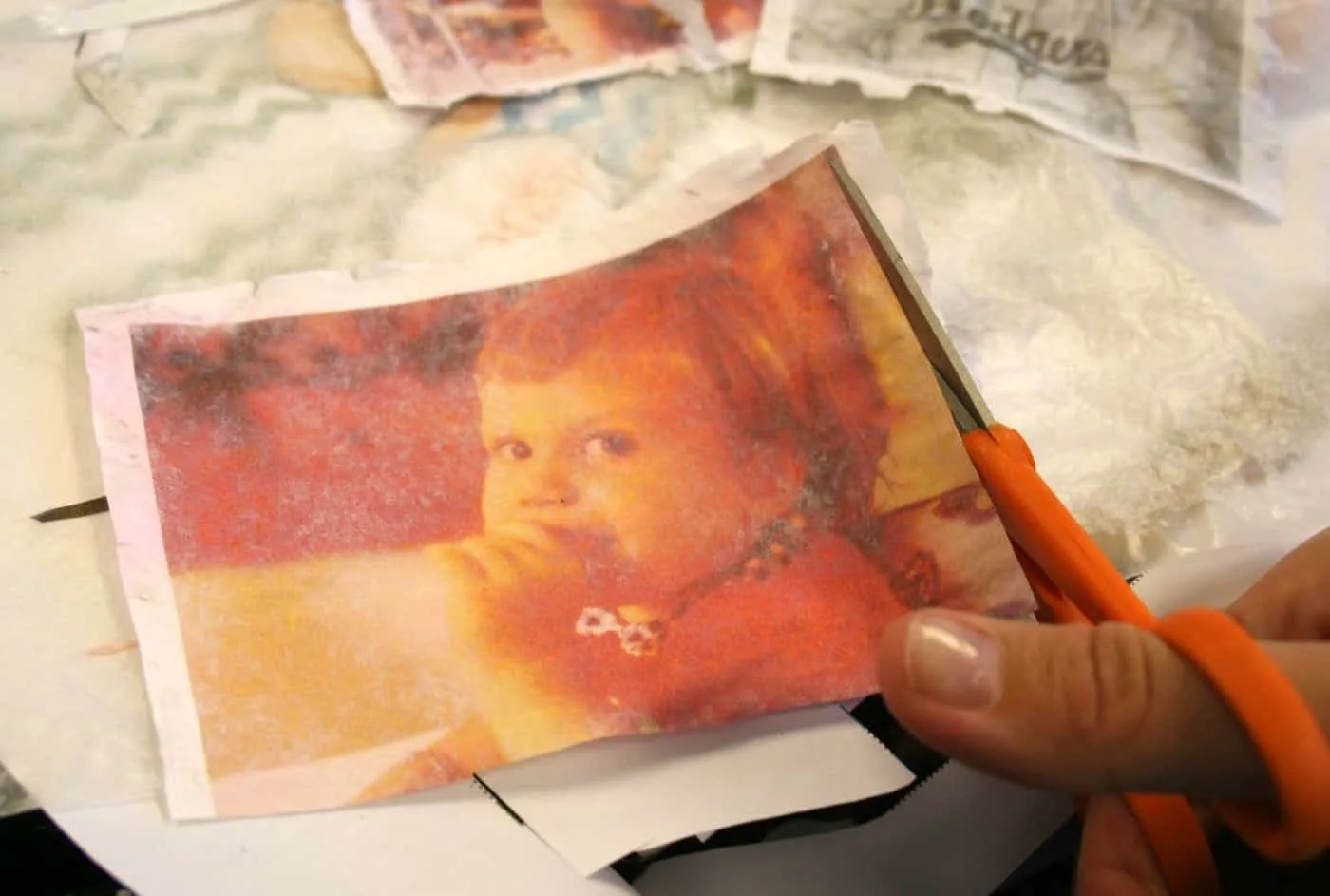
Cut out the images and adhere the photos to glass. They will stick if you rub, so rub carefully. If you don’t press them down too hard, they can be peeled up and reused.

I love the idea of doing this photo transfer to glass on recycled glass bottles, mason jars, or any other containers you can get from the thrift store.
Surprise your family with old photos when they come over – you can even ask them to guess who is in the photo!
See how to make these photo transfer decals in the video in this post! Just click play to learn how.
If you love this photo transfer to glass, be sure to create your own version and share with me in the comments! Be sure to share with your friends on Facebook, Twitter, and Pinterest.
Photos on Glass
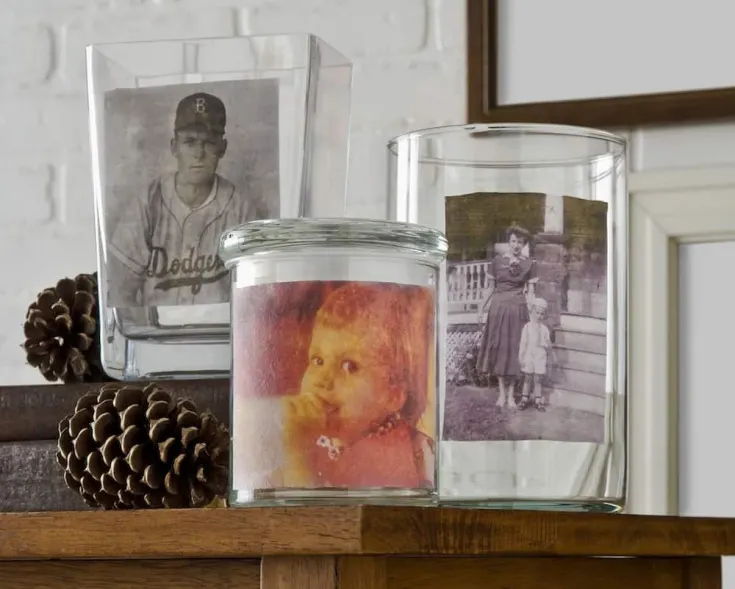
Learn how to do a photo transfer to glass with the decal method and Mod Podge photo transfer medium.
Materials
- Glass vases of various sizes
- Mod Podge photo transfer medium
Tools
- Printer and paper
- Foam brush
- Scissors
- Wax paper or a silicone mat
Instructions
- Print out the images and cut out with the scissors. Leave approximately a 1/2” - 1” border around the image.
- Lay the photos face up on wax paper. Spread Mod Podge in a thick layer using the foam brush until you can no longer see the photo. Then place on wax paper (keeping the photo transfer medium and photo face up).
- Let the photos completely dry overnight on the wax paper.
- Once dry, turn a photo over, dampen in the sink (or with a spray bottle) and start rubbing away the paper. You can use your finger and medium pressure.
- Let the photos dry and see if there are additional areas where you need to rub away paper. Continue to be gentle when rubbing.
- Cut out the images and adhere the photos to glass. They will stick if you rub, so rub carefully.
Notes
TIP: If there is any writing or text in the photo, reverse the image before printing to make it readable.
And if you want more articles about Mod Podge photo transfer medium, check out the posts below!

J.A.
Sunday 18th of September 2022
Can I transfer it to a drinking glass? If so, hand wash or dishwasher safe? If no to the above, recommendations for a way to transfer image to glass as almost an etching or etching method..?
Jeremy
Saturday 17th of June 2023
@Amy, what if you transferred it to the glass and then did a quick coat of resin Epoxy over that? Would it then be dishwasher safe?
Amy
Tuesday 20th of September 2022
Hi JA! No you can't transfer to a drinking glass (that you can wash). I don't know any way to do it and have it dishwasher safe except to hire a company online that can print on glassware. This might help: https://www.glasswithatwist.com/how-we-digitally-print
Tashante Johnson
Thursday 28th of October 2021
I've successfully done this transfer now I'm wondering will the results be the same using my canon printer
Amy
Thursday 28th of October 2021
Hi Tashante! You can try it and see if it works (I'm assuming it's inkjet). It may bleed. SOME inkjet printers work but not many. Just let the printouts dry for a few days and do a sample to see :)
Carolyn Raihl
Monday 25th of October 2021
Can you use any mod Podge. I have gloss-luster
Amy
Monday 25th of October 2021
Hi Carolyn! For this particular project you'll need to use the photo transfer medium.
Tori
Monday 5th of July 2021
How do I make these transfers permanent? Will they lift up on the edges if I don’t apply a sealer? I’m just curious because I saw, can be reusable and I would hate for something to lift up on the edges…(I’m making a vintage bottle of poison as a gift for a friend)
Amy
Wednesday 7th of July 2021
Hmmmm - these aren't meant to be permanent. Honestly if you want them to be permanent, I would just print them and Mod Podge them directly to the glass like this: https://modpodgerocksblog.com/decorate-bottles-with-vintage-labels/ I wouldn't do a photo transfer.
Brooke
Friday 28th of May 2021
Step 2 is kind of confusing. Can someone clarify... are you putting the wax paper on top of the image, or under the image, or both? It says to lay the photo face up on wax paper, and then it says to lay on wax paper again after covering it with the MOD podge.
Brooke
Tuesday 15th of June 2021
@Amy, thank you for clarifying 😊
Amy
Friday 28th of May 2021
Hi Brooke! I corrected it! So you'll apply the photo transfer medium to the photo on one piece of wax paper - face up - and move it to another piece of wax paper and let it dry. Still face up. You just want the medium on top of the image. The reason I move it to a second piece of wax paper is so that it's not sitting in the medium you likely brushed over the edges when you applied it. So I use a fresh piece :)